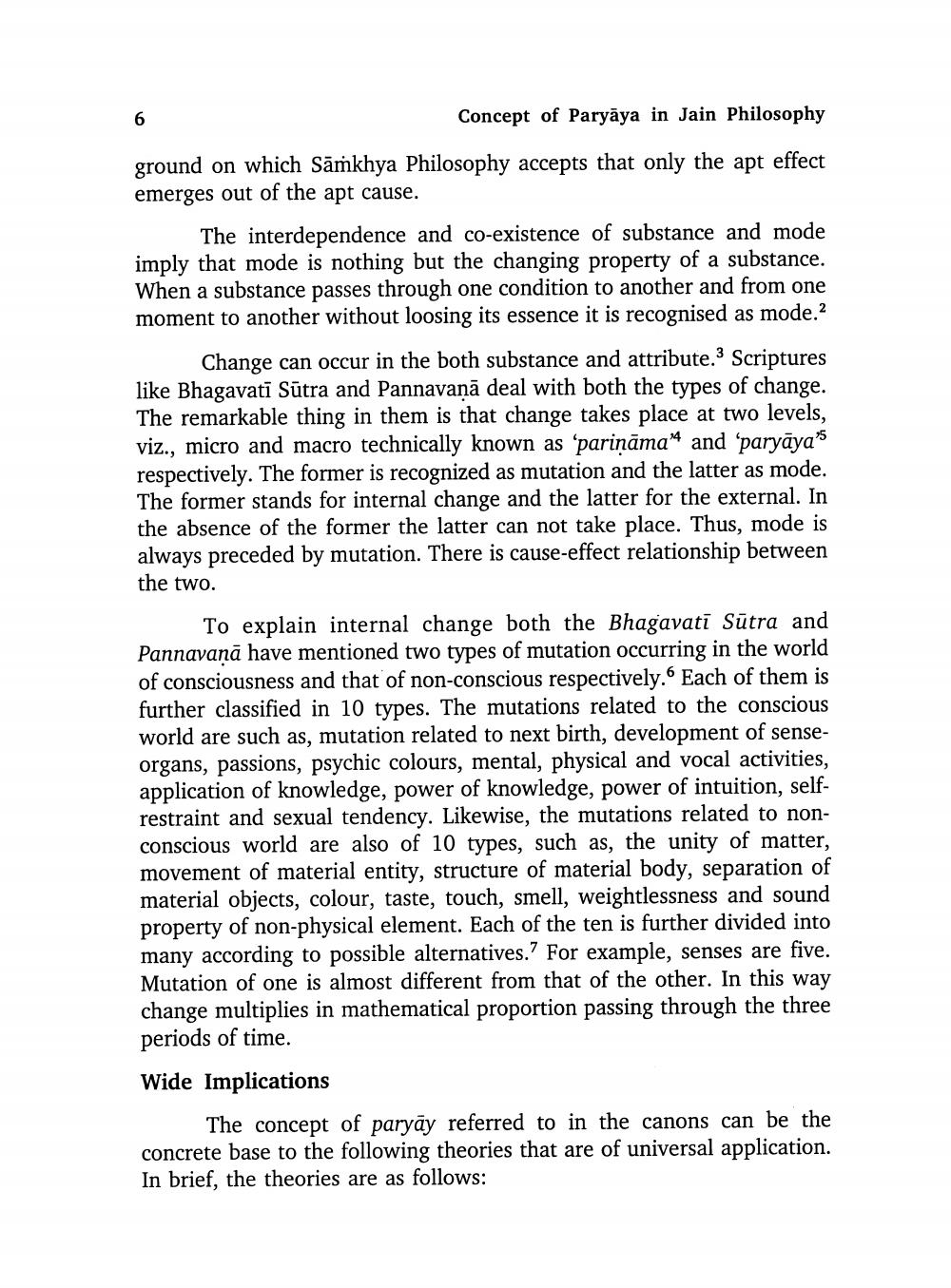________________ Concept of Paryaya in Jain Philosophy ground on which Samkhya Philosophy accepts that only the apt effect emerges out of the apt cause. The interdependence and co-existence of substance and mode imply that mode is nothing but the changing property of a substance. When a substance passes through one condition to another and from one moment to another without loosing its essence it is recognised as mode.2 Change can occur in the both substance and attribute. Scriptures like Bhagavati Sutra and Pannavana deal with both the types of change. The remarkable thing in them is that change takes place at two levels, viz., micro and macro technically known as "parinama" and paryaya's respectively. The former is recognized as mutation and the latter as mode. The former stands for internal change and the latter for the external. In the absence of the former the latter can not take place. Thus, mode is always preceded by mutation. There is cause-effect relationship between the two. To explain internal change both the Bhagavati Sutra and Pannavana have mentioned two types of mutation occurring in the world of consciousness and that of non-conscious respectively. Each of them is further classified in 10 types. The mutations related to the conscious world are such as, mutation related to next birth, development of senseorgans, passions, psychic colours, mental, physical and vocal activities, application of knowledge, power of knowledge, power of intuition, selfrestraint and sexual tendency. Likewise, the mutations related to nonconscious world are also of 10 types, such as, the unity of matter, movement of material entity, structure of material body, separation of material objects, colour, taste, touch, smell, weightlessness and sound property of non-physical element. Each of the ten is further divided into many according to possible alternatives. For example, senses are five. Mutation of one is almost different from that of the other. In this way change multiplies in mathematical proportion passing through the three periods of time. Wide Implications The concept of paryay referred to in the canons can be the concrete base to the following theories that are of universal application. In brief, the theories are as follows:




